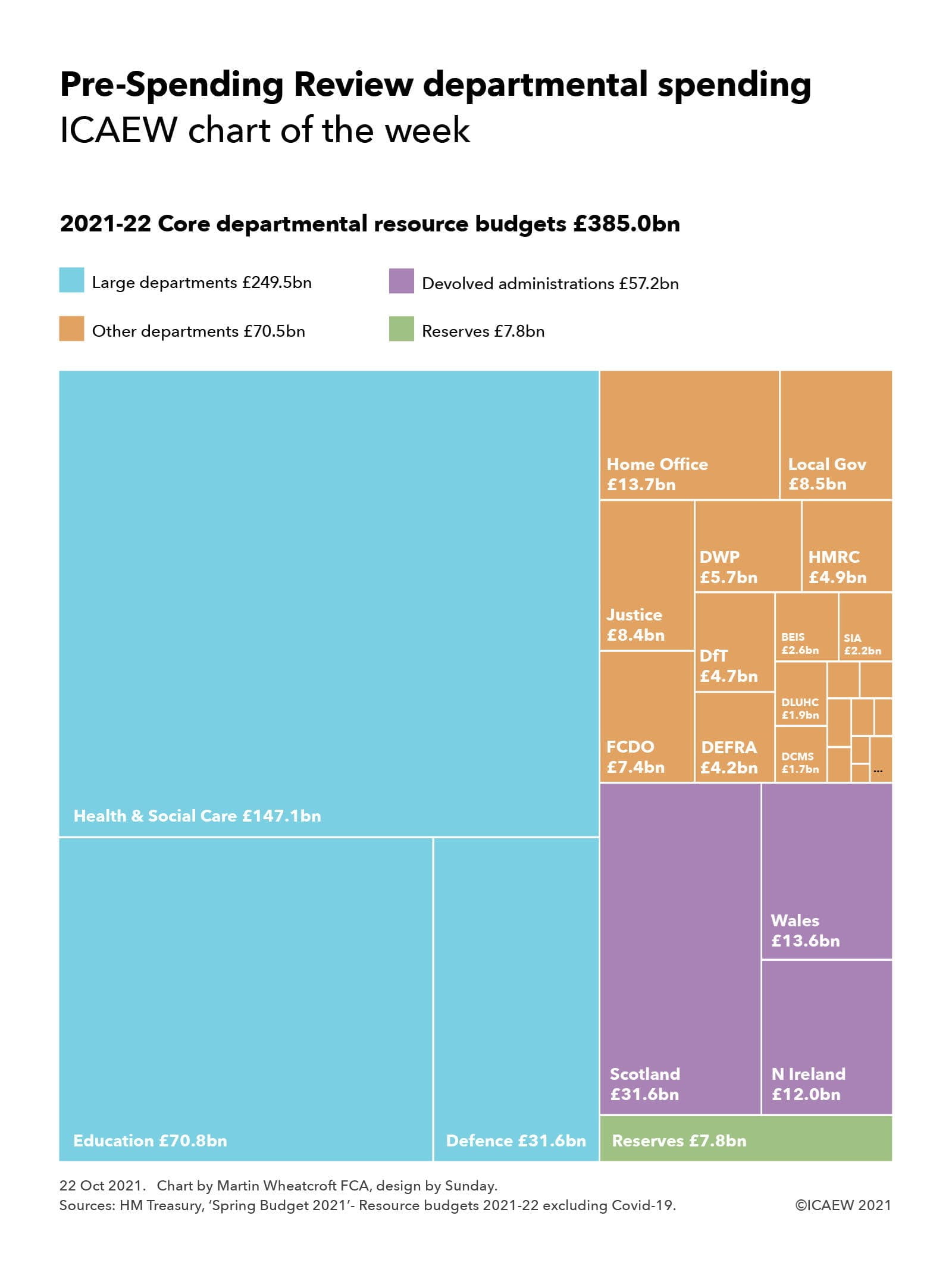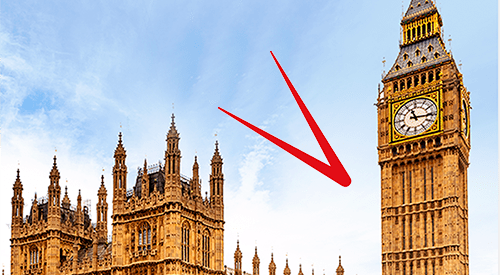
The Spending Review and Autumn Budget on Wednesday 27 October will see the Chancellor set out departmental budgets for the next three financial years from 1 April 2022. The ICAEW chart of the week shows the core departmental resource budgets for the current financial year, excluding COVID-19 related spending, capital investment, and annually managed expenditure such as the state pension and welfare provision.
With budget settlements for health, schools and defence already pencilled in, there may be a need for cuts in some departments if the Chancellor is to be able to free up cash to direct it where it is most needed.
The Chancellor has already announced that the spending envelope will increase core departmental resource budgets of £385bn as shown in the chart to £408bn in 2022-23, £422bn in 2023-24 and £441bn in 2024-25.
This might be seen as implying generous budget increases are on offer, but £18bn of the £23bn increase in the coming financial year has already been allocated to the Department for Health & Social Care (DHSC). This reflects £13bn of additional funding from the recently announced health and social care levy in addition to already planned increases in health spending, taking the DHSC budget to £164.8bn in 2022-23, rising to £171.4bn and £175.9bn in the following two years.
A further £2bn has been allocated to English schools next year (taking it from £49.8bn to £52.2bn within the Education’s overall £70.8bn budget) while the Ministry of Defence’s current budget of £31.6bn is expected to receive a flat budget settlement in 2022-23 before rising in subsequent years. With just under a billion in consequential increases to the devolved administrations under the Barnett formula, that leaves a mere £2bn available for non-schools education and all the other departments.
With local government and departments such as Justice under severe financial pressure, the implication is that some departments may receive cuts in their core budgets to free up extra cash for those more in need.
Other departmental budgets of £70.5bn in 2021-22 include the Home Office £13.7bn, Local Government £8.5bn, Justice £8.4bn, the Foreign, Commonwealth & Development Office (FCDO) £7.4bn, the Department for Work & Pensions (DWP) £5.7bn, HMRC £4.9bn, the Department for Transport (DfT) £4.7bn, the Department of Environment, Food & Rural Affairs (DEFRA) £4.2bn, the Department for Business, Energy & Industrial Strategy (BEIS) £2.6bn, the Single Intelligence Account (SIA) £2.2bn, the Department for Levelling Up, Housing & Communities (DLUHC) and the Department for Digital, Culture, Media & Sports £1.7bn. This is followed by a series of smaller departments such as the Cabinet Office £0.7bn, Law Officers £0.7bn, the Department for International Trade (DIT) £0.5bn and HM Treasury £0.3bn as well as non-ministerial departments and other public bodies.
The chart does not include capital budgets, which are expected to rise from £99.8bn in the current year to £107.3bn, £109.1bn and £112.8bn in 2022-23, 2023-24 and 2024-25 respectively. Here, the Chancellor has greater room for manoeuvre and it would not be surprising for the Budget Statement next month to focus on capital investment programmes across the country rather than the more challenging budget settlements for current expenditure that most departments are likely to receive.
Insights special: Repairing public finances
ICAEW Insights takes a closer look at the efforts being made to repair public finances in the wake of the coronavirus pandemic.




